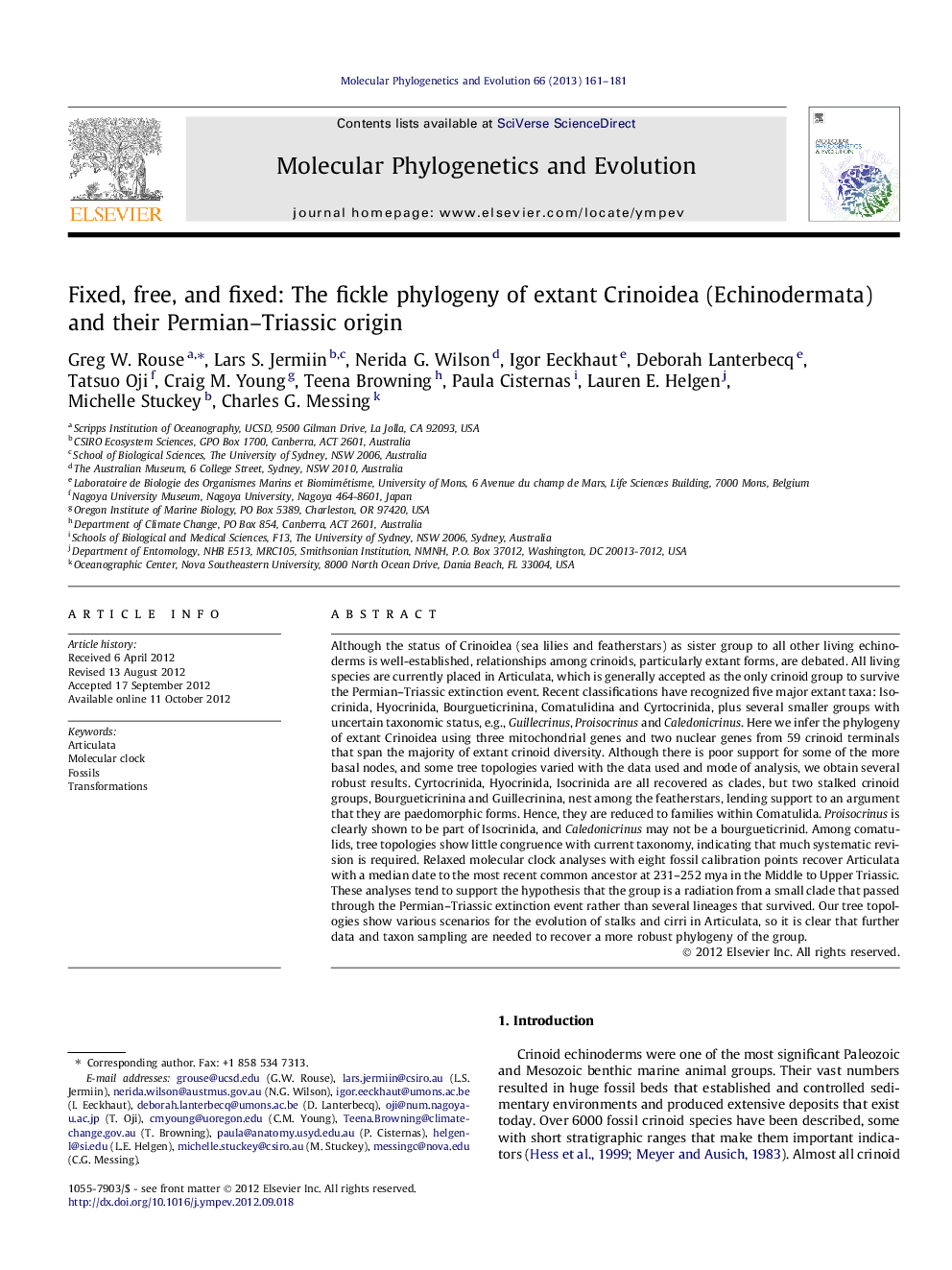| کد مقاله | کد نشریه | سال انتشار | مقاله انگلیسی | نسخه تمام متن |
|---|---|---|---|---|
| 5919991 | 1164278 | 2013 | 21 صفحه PDF | دانلود رایگان |

Although the status of Crinoidea (sea lilies and featherstars) as sister group to all other living echinoderms is well-established, relationships among crinoids, particularly extant forms, are debated. All living species are currently placed in Articulata, which is generally accepted as the only crinoid group to survive the Permian-Triassic extinction event. Recent classifications have recognized five major extant taxa: Isocrinida, Hyocrinida, Bourgueticrinina, Comatulidina and Cyrtocrinida, plus several smaller groups with uncertain taxonomic status, e.g., Guillecrinus, Proisocrinus and Caledonicrinus. Here we infer the phylogeny of extant Crinoidea using three mitochondrial genes and two nuclear genes from 59 crinoid terminals that span the majority of extant crinoid diversity. Although there is poor support for some of the more basal nodes, and some tree topologies varied with the data used and mode of analysis, we obtain several robust results. Cyrtocrinida, Hyocrinida, Isocrinida are all recovered as clades, but two stalked crinoid groups, Bourgueticrinina and Guillecrinina, nest among the featherstars, lending support to an argument that they are paedomorphic forms. Hence, they are reduced to families within Comatulida. Proisocrinus is clearly shown to be part of Isocrinida, and Caledonicrinus may not be a bourgueticrinid. Among comatulids, tree topologies show little congruence with current taxonomy, indicating that much systematic revision is required. Relaxed molecular clock analyses with eight fossil calibration points recover Articulata with a median date to the most recent common ancestor at 231-252Â mya in the Middle to Upper Triassic. These analyses tend to support the hypothesis that the group is a radiation from a small clade that passed through the Permian-Triassic extinction event rather than several lineages that survived. Our tree topologies show various scenarios for the evolution of stalks and cirri in Articulata, so it is clear that further data and taxon sampling are needed to recover a more robust phylogeny of the group.
Highlight⺠Major crinoid taxa recovered as clades were Cyrtocrinida, Hyocrinida and Isocrinida. ⺠Two stalked groups (Bourgueticrinina and Guillecrinina) nest among featherstars, Comatulida. ⺠Problems with the taxonomy within Comatulida and Isocrinida were revealed. ⺠Relaxed molecular clocks recovered extant Articulata to a most recent common ancestor at 231-252 mya. ⺠Various scenarios for the evolution of stalks and cirri in Articulata were found.
Journal: Molecular Phylogenetics and Evolution - Volume 66, Issue 1, January 2013, Pages 161-181